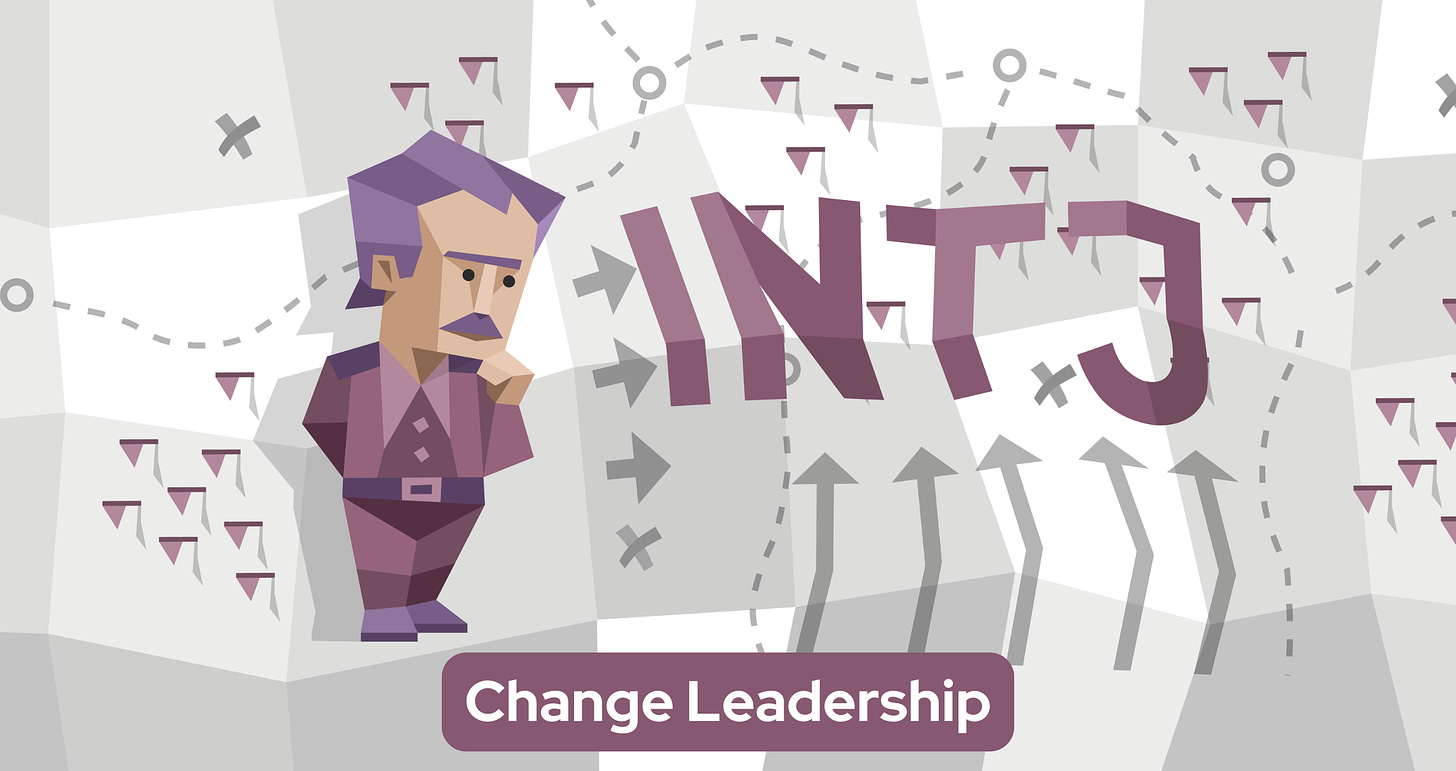Leading INTJs: Change Leadership Series
See how to leverage INTJs’ strengths and address their challenges to help them move smoothly through transitions.
How to spot INTJs (Architects):
INTJs (Architects) share the Introverted, Intuitive, Thinking, and Judging personality traits.
They are analytical and strategic when dealing with change. Before getting on board, they’ll want to understand the reasons behind the change and consider all long-term implications. They might ask questions and take time to reflect and plan quietly.
INTJs tend to approach change, and all things in life, in a rational way. In fact, they’re the most likely personality type to say they do so. 👇
This tendency to prioritize logic and reason means that INTJs approach challenges with a systematic, analytical mindset. Emotions and intuition take a back seat to cold, hard facts and rational thinking. During times of change, INTJs may struggle with emotional or intuitive decision-making. They’ll seek concrete data and logical explanations for every shift in strategy or process.
Here are three leadership strategies you can apply when guiding INTJs through change:
Provide clear, logical explanations: Always present the rationale behind changes. Use data, statistics, and concrete examples to support your decisions.
Allow time for analysis: Give INTJs space to process new information. They’ll appreciate the opportunity to think through changes before implementing them.
Leverage their strategic thinking: Involve INTJs in long-term planning. Their ability to see the big picture and identify potential pitfalls can be invaluable.
Let’s go a little deeper, shall we? Offering foresight, analysis, and strategic thinking, INTJs can be invaluable assets to your team during organizational change. But their unique approach to work requires a tailored management style. Let’s explore how to leverage their strengths and address their challenges to help INTJs move smoothly through transitions.
Next, we’ll cover:
The special strength that INTJs bring to navigating workplace change
The greatest hurdle that INTJs encounter during periods of uncertainty
A key leadership strategy for supporting INTJs through transitions
Keep reading with a 7-day free trial
Subscribe to Leadership by 16Personalities to keep reading this post and get 7 days of free access to the full post archives.






